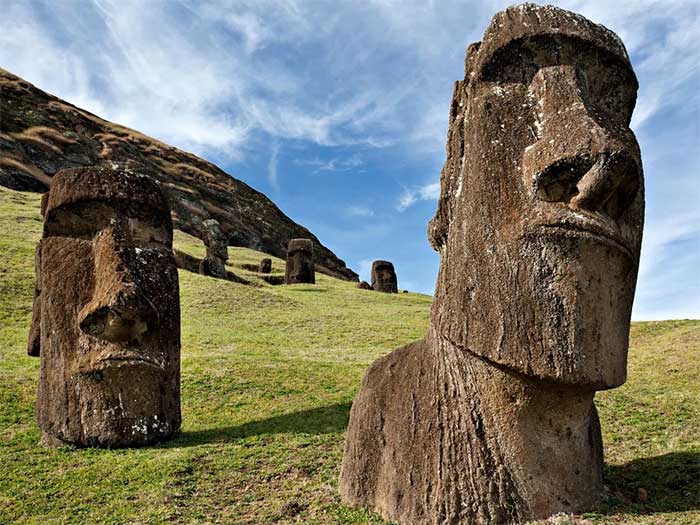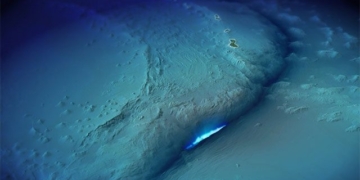A new Moai statue – the iconic monolithic figure of Easter Island – has been discovered beneath the dry lake bed within a volcanic crater.
The statue was found on February 21 by a group of volunteer scientists from three Chilean universities collaborating on a project to restore the wetlands in the Rano Raraku volcanic crater, according to reports from the Guardian.

Some Moai statues on Easter Island. (Photo: Alamy).
“This Moai statue holds significant potential for scientific and natural studies. This is a truly unique discovery as it is the first time a Moai has been found inside the (lake) in Rano Raraku”, the indigenous community of Ma’u Henua stated on February 28.
Several Moai statues in the area had been burned to ashes during a wildfire in October 2022 on the island.
The director of the Ma’u Henua community, which manages Rapa Nui National Park where the volcano is located, shared: “This Moai is situated at the center of a small lake that began drying up in 2018. Interestingly, for at least the past 200-300 years, the lake has been 3 meters deep, meaning no one could have placed a Moai there during that time.”
Moai are unique monolithic stone statues characterized by elongated faces and lacking legs, mostly carved from very hard tuff rock derived from volcanic ash.
The newly discovered Moai stands 1.6 meters tall. It was found lying on its side, looking up at the sky.
The Ma’u Henua community stated they “do not plan to move the Moai statue from its location,” and they are currently seeking funding for more extensive research on this discovery.
There are numerous colossal stone statues on Easter Island, with each statue likely crafted by a distinct community. The first statues are believed to date back to the 13th century.
The Moai statues are thought to represent the ancestors of the island’s community, serving as gathering sites for communal rituals.


















































